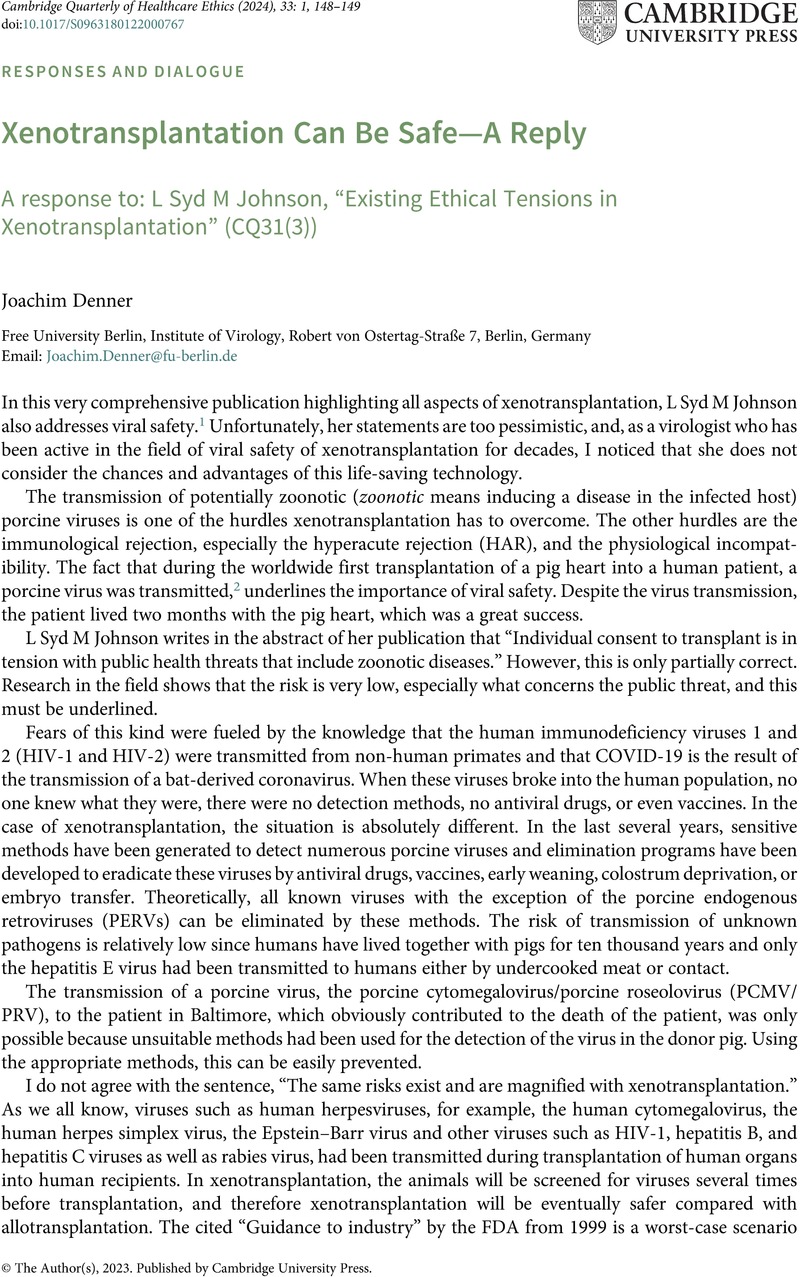Article contents
Xenotransplantation Can Be Safe—A Reply
A response to: L Syd M Johnson, “Existing Ethical Tensions in Xenotransplantation” (CQ31(3))
Published online by Cambridge University Press: 17 January 2023
Abstract

- Type
- Discussion
- Information
- Copyright
- © The Author(s), 2023. Published by Cambridge University Press
References
Notes
1. Johnson, LSM. Existing ethical tensions in xenotransplantation. Cambridge Quarterly of Healthcare Ethics 2022;31(3):355–67CrossRefGoogle ScholarPubMed.
2. Griffith, BP, Goerlich, CE, Singh, AK, Rothblatt, M, Lau, CL, Shah, A, et al. Genetically modified porcine-to-human cardiac xenotransplantation. New England Journal of Medicine 2022;387(1):35–44 CrossRefGoogle ScholarPubMed.
3. Denner, J, Schuurman, HJ, Patience, C. The International Xenotransplantation Association consensus statement on conditions for undertaking clinical trials of porcine islet products in type 1 diabetes--Chapter 5: Strategies to prevent transmission of porcine endogenous retroviruses. Xenotransplantation. 2009;16(4):239–48CrossRefGoogle ScholarPubMed.
4. Nellore, A, Walker, J, Kahn, MJ, Fishman, JA. Moving xenotransplantation from bench to bedside: Managing infectious risk. Transplantation Infectious Diseases 2022;23:e13909 Google Scholar.
5. Denner, J. Virus safety of xenotransplantation. Viruses 2022;14(9):1926 CrossRefGoogle ScholarPubMed.
- 1
- Cited by




